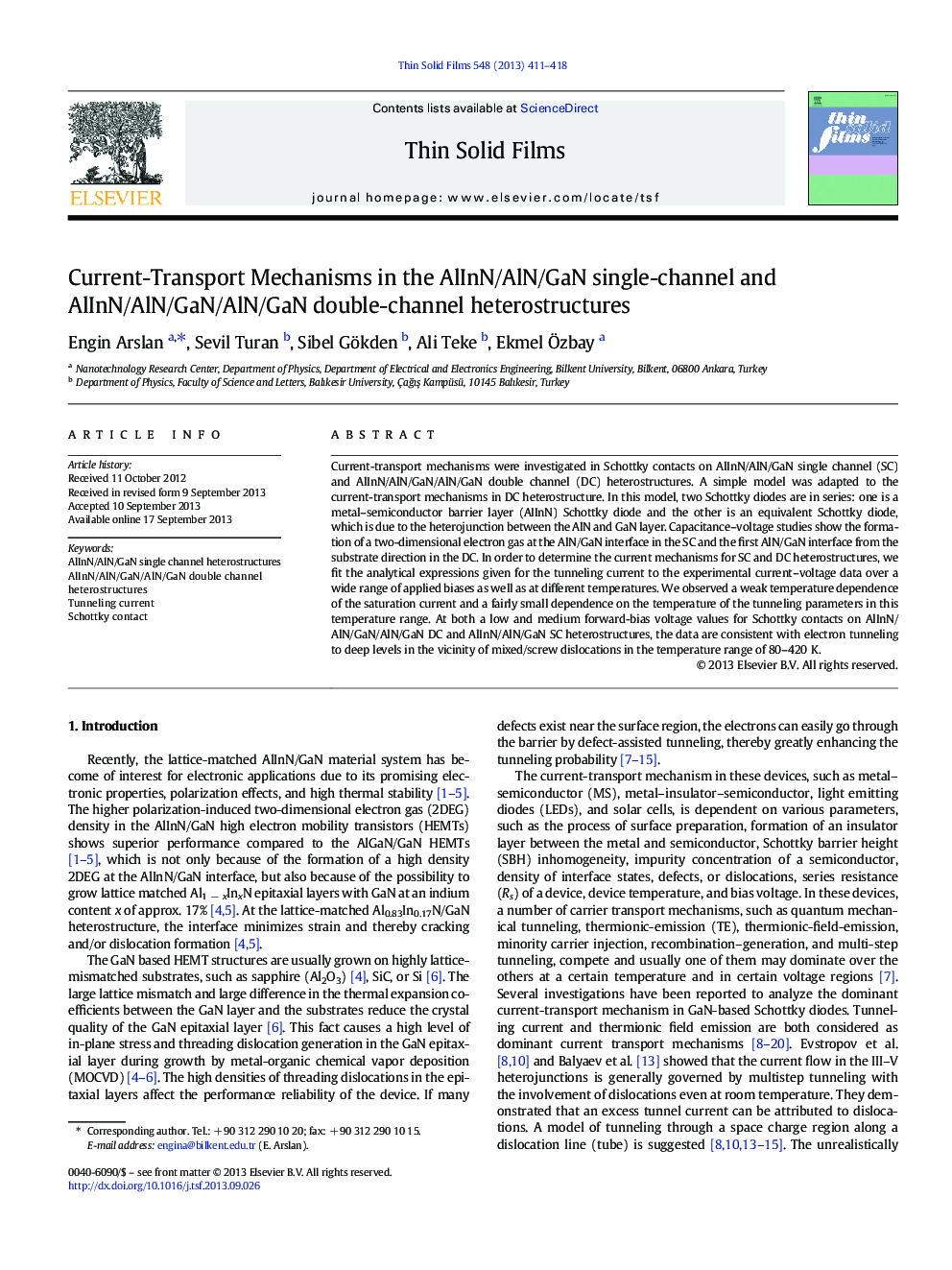| کد مقاله | کد نشریه | سال انتشار | مقاله انگلیسی | نسخه تمام متن |
|---|---|---|---|---|
| 1665839 | 1518056 | 2013 | 8 صفحه PDF | دانلود رایگان |

• Current mechanisms were investigated on single and double channel heterostructures.
• A model was adapted to the current mechanisms in double channel heterostructures.
• We observed a weak temperature dependence of the saturation current.
• And a small dependence of the tunneling parameters in this temperature range
Current-transport mechanisms were investigated in Schottky contacts on AlInN/AlN/GaN single channel (SC) and AlInN/AlN/GaN/AlN/GaN double channel (DC) heterostructures. A simple model was adapted to the current-transport mechanisms in DC heterostructure. In this model, two Schottky diodes are in series: one is a metal–semiconductor barrier layer (AIInN) Schottky diode and the other is an equivalent Schottky diode, which is due to the heterojunction between the AlN and GaN layer. Capacitance–voltage studies show the formation of a two-dimensional electron gas at the AlN/GaN interface in the SC and the first AlN/GaN interface from the substrate direction in the DC. In order to determine the current mechanisms for SC and DC heterostructures, we fit the analytical expressions given for the tunneling current to the experimental current–voltage data over a wide range of applied biases as well as at different temperatures. We observed a weak temperature dependence of the saturation current and a fairly small dependence on the temperature of the tunneling parameters in this temperature range. At both a low and medium forward-bias voltage values for Schottky contacts on AlInN/AlN/GaN/AlN/GaN DC and AlInN/AlN/GaN SC heterostructures, the data are consistent with electron tunneling to deep levels in the vicinity of mixed/screw dislocations in the temperature range of 80–420 K.
Journal: Thin Solid Films - Volume 548, 2 December 2013, Pages 411–418